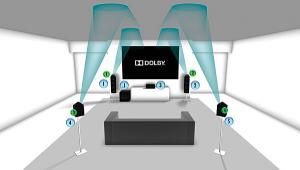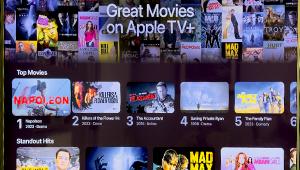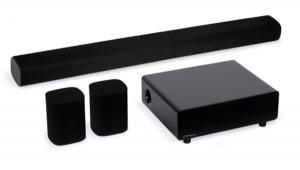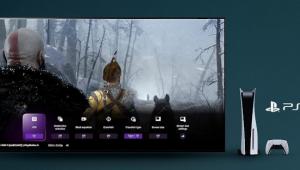Nice post! This is a very nice blog that I will definitively come back to more times this retro bowl unblocked year!
Bass Management Boot Camp Page 2
The Right Crossover
The standard crossover frequency is 80 Hz, chosen because the human ear can’t locate sounds below that. The idea is that you don’t want your ears to be able to locate the subwoofer. When you watch Patton, you want to hear George C. Scott’s voice coming from the center speaker, not the subwoofer in the corner. And when part of an actor or singer’s voice comes from the subwoofer, it sounds bloated and bassy. Do you really want Jessica Alba to sound like James Earl Jones?
Sir! No, sir!
That’s better.
There is a potential downside to an 80 Hz crossover, though. It’s too much bass for little satellites like the Cambridge Minx or the Paradigm MilleniaOne. You’ll get distortion as well as a sonic “hole” between the subwoofer and the satellites.
To figure your crossover point, I recommend taking the speaker’s rated bass response and adding 20 to 30 Hz. So if the manufacturer says the speaker plays down to 50 Hz, set your crossover at 70 or 80 Hz. There are two reasons why. First, speaker bass-response specs are often more optimistic than realistic. Second, bass management doesn’t block all bass below the crossover point. A 100-Hz crossover still allows some energy to pass through at lower frequencies.
It’s easy to evaluate your crossover frequency setting by ear. If you hear distortion coming from your satellites, or if voices sound thin, your crossover point is too low. If voices sound bloated, or if you hear them coming from the subwoofer, your crossover point is too high. By the way, the latter problems are unlikely to occur if you’re using full-range left and right speakers instead of a subwoofer; those speakers are designed to reproduce voices properly.
If you have large front speakers, you may want to use a crossover point lower than 80 Hz. From a technical standpoint, it’s best to send everything below 80 Hz to your subwoofer, because then you’re free to improve the bass response by playing with subwoofer positioning, equalization, etc. However, you may subjectively prefer the sound in your system when the upper bass (say, 40 Hz and up) is reproduced by the left/right speakers rather than the subwoofer. If your receiver lets you set different crossover points for the front, center, and surrounds, feel free to set a lower crossover point for the fronts. To determine the best crossover point, take the manufacturer’s rated bass response of the tower speakers and add 10 to 20 Hz — so for a tower rated at 30 Hz, cross it over at 40 or 50 Hz.
Advanced Training
What we’ve covered so far will get you through setup on most receivers. Some, though, offer more options for the dedicated enthusiast. Do you think you’re ready, recruit?
Sir! Yes, sir!
We’ll see about that.
Some receivers/processors let you change bass management settings for certain modes, such as movie and music listening. With proper setup, your system should sound great no matter what you play. Still, some listeners prefer to deactivate their subwoofer for stereo music listening, something made possible by the “direct” mode found on many receivers. A few receivers/processors, such as Anthem’s Statement D2v and AVM 50v, even let you create different bass management settings for movies and music. For movies, you should follow the above rules. For music, there are no rules, so experiment until you get the sound you like.
Some receivers/processors let you perform additional adjustment on the LFE (low-frequency effects) channel from 5.1 or 7.1 sources such as Blu-ray Discs and DVDs. You might be able to pipe the LFE channel into the front left/right speakers in addition to the subwoofer, to provide greater maximum bass output. This could be a useful setting if your subwoofer is fairly small and your front left/right speakers are relatively large.
You might also be able to set a different low-pass filter for the LFE channel, or attenuate the LFE channel for specific formats — i.e., drop it by 10 dB for DTS. There are no rules for setting these controls; just follow the instructions in the manual. You can follow instructions, can’t you?
- Log in or register to post comments

There is a lot of information out there that can help anyone start a successful social media effort shell shockers


























































